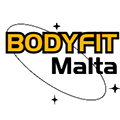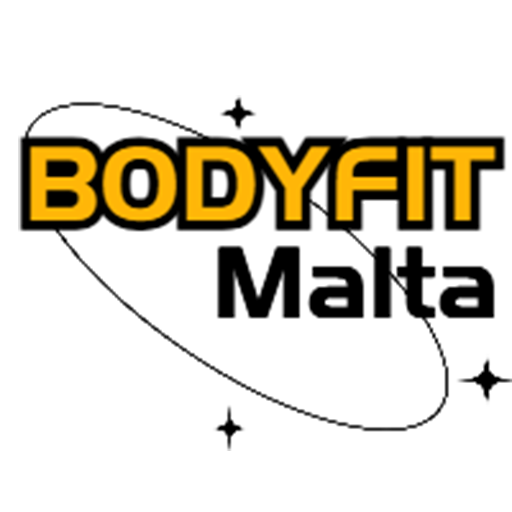Introduction
As we go about our daily activities, it’s not uncommon to experience upper back pain from time to time. This can be caused by poor posture, stress, or a lack of exercise. While pain relief medication may provide temporary relief, stretching is a natural and effective way to alleviate upper back pain. In this article, we will explore seven effective stretches that can help you find relief from upper back pain.
Benefits of Stretching The Upper Back
Stretching the upper back offers a variety of benefits, including:
- Alleviating upper back pain: By stretching the muscles in the upper back, you can reduce pain and discomfort caused by poor posture, overuse, or injury.
- Improving posture: Poor posture is a common problem for many people, but by stretching the upper back muscles, you can improve alignment and prevent hunching or slouching.
- Increasing flexibility: Stretching can help to increase the range of motion in the upper back, making it easier to perform daily activities and exercise.
- Reducing tension and stress: Tight muscles in the upper back can contribute to tension and stress, but stretching can help to release this tension and promote relaxation.
- Improving circulation: Stretching can help to increase blood flow to the muscles in the upper back, which can promote healing and reduce inflammation.
- Enhancing athletic performance: By improving flexibility and range of motion in the upper back, stretching can help to enhance athletic performance and reduce the risk of injury.
Overall, incorporating regular upper back stretches into your routine can help to improve your overall health and wellness, reduce pain and discomfort, and enhance your physical performance.
7 Effective Upper Back Stretches
Upper back pain is a common issue that many of us experience from time to time. It can be caused by a variety of factors such as poor posture, stress, or a lack of exercise. While medication can provide temporary relief, stretching is a natural and effective way to alleviate upper back pain. In this article, we will explore seven effective stretches that can help you find relief from upper back pain.
- Cat-Cow Stretch- The Cat-Cow Stretch is a gentle yoga pose that helps to stretch the spine and relieve tension in the upper back. To perform this stretch, start on your hands and knees with your wrists directly under your shoulders and your knees directly under your hips. As you inhale, arch your back and lift your head up toward the ceiling (Cow pose). As you exhale, round your spine and tuck your chin towards your chest (Cat pose). Repeat this stretch for 10-15 breaths. The Cat-Cow Stretch helps to improve spinal mobility and relieve tension in the upper back.
- Child’s Pose- The Child’s Pose is a relaxing yoga pose that helps to stretch the spine and shoulders. To perform this stretch, start on your hands and knees with your wrists directly under your shoulders and your knees directly under your hips. Slowly lower your hips back towards your heels and stretch your arms out in front of you. Rest your forehead on the floor and hold this pose for 10-15 breaths. The Child’s Pose helps to stretch the spine and shoulders, relieve tension in the upper back, and promote relaxation.
- Shoulder Blade Squeeze- The Shoulder Blade Squeeze is a simple stretch that can be done anywhere to relieve tension in the upper back. To perform this stretch, sit up straight in a chair with your feet flat on the floor. Bring your shoulder blades together and hold for 10-15 seconds. Release and repeat for 10-15 reps. The Shoulder Blade Squeeze helps to relieve tension in the upper back and improve posture.
- Seated Forward Fold- The Seated Forward Fold is a yoga pose that helps to stretch the hamstrings, lower back, and upper back. To perform this stretch, sit on the floor with your legs extended in front of you. Slowly fold forward and reach for your toes. Hold this pose for 10-15 breaths. The Seated Forward Fold helps to stretch the hamstrings, lower back, and upper back, relieve tension in the shoulders and neck, and improve posture.
- Thread the Needle- The Thread the Needle stretch is a yoga pose that helps to stretch the upper back and shoulders. To perform this stretch, start on your hands and knees with your wrists directly under your shoulders and your knees directly under your hips. Reach your right arm under your left arm and rest your right shoulder on the ground. Hold this pose for 10-15 breaths and repeat on the other side. The Thread the Needle stretch helps to stretch the upper back and shoulders, relieve tension, and improve posture.
- Doorway Stretch- The Doorway Stretch is a simple stretch that helps to stretch the chest and shoulders, which can alleviate tension in the upper back. To perform this stretch, stand in a doorway with your arms out to the side at a 90-degree angle. Lean forward through the doorway until you feel a stretch in your chest and shoulders. Hold this stretch for 10-15 seconds. The Doorway Stretch helps to stretch the chest and shoulders, relieve tension in the upper back, and improve posture.
- Wall Angels- Wall Angels are a great exercise to help improve posture and alleviate tension in the upper back. To perform this exercise, stand with your back against a wall and your feet about 6 inches away from the wall. Raise your arms up to a 90-degree angle and slowly lower them down, keeping your elbows and wrists against the wall. Repeat for 10-15 reps. Wall Angels help to improve posture, relieve tension in the upper back, and strengthen the back and shoulder muscles.
In conclusion, these seven stretches are effective ways to alleviate upper back pain and improve posture. Incorporating stretches into your daily routine can help to prevent upper back pain and improve overall flexibility and mobility. Remember to listen to your body and only perform stretches that feel comfortable for you. Consult a healthcare professional before starting any new exercise routine.
FAQs:
- How often should I perform these stretches?
- It’s recommended to perform these stretches at least once a day or whenever you feel the tension in your upper back.
- Can these stretches be done at work?
- Yes, most of these stretches can be done at work or while sitting at a desk.
- Can stretching help prevent upper back pain?
- Yes, incorporating stretches into your daily routine can help to prevent upper back pain and improve overall flexibility and mobility.
- Are these stretches suitable for everyone?
- These stretches are generally safe for most people, but it’s important to consult a healthcare professional before starting any new exercise routine.
- How long should I hold each stretch?
- It’s recommended to hold each stretch for 10-15 breaths or 10-15 seconds.
- What if I feel pain during the stretches?
- If you feel pain during any of the stretches, stop immediately and consult a healthcare professional.
- Can these stretches help with posture?
- Yes, these stretches can help to improve posture by stretching the muscles in the upper back and shoulders.
- Can I perform these stretches before or after a workout?
- Yes, these stretches can be performed before or after an upper back workout to warm up or cool down the muscles in the upper back.
- Can I modify these stretches if I have limited mobility?
- Yes, some of these stretches can be modified to accommodate limited mobility. Consult a healthcare professional or a certified personal trainer for modifications.
- How long does it take to see results from these stretches?
- Results may vary, but incorporating these stretches into your daily routine can lead to improvements in upper back pain and posture over time. Consistency is key to seeing results.
Remember to always listen to your body and only perform stretches that feel comfortable for you. If you experience any pain or discomfort, stop immediately and consult a healthcare professional. By incorporating these stretches into your daily routine, you can improve your upper back strength, alleviate pain, and improve your overall posture.







